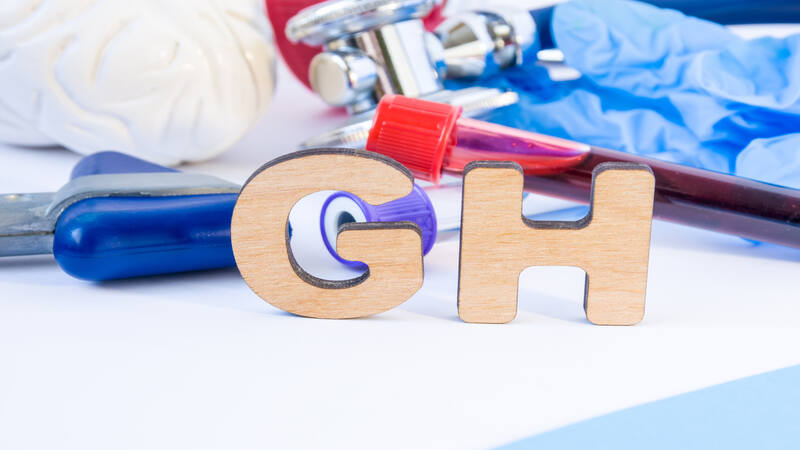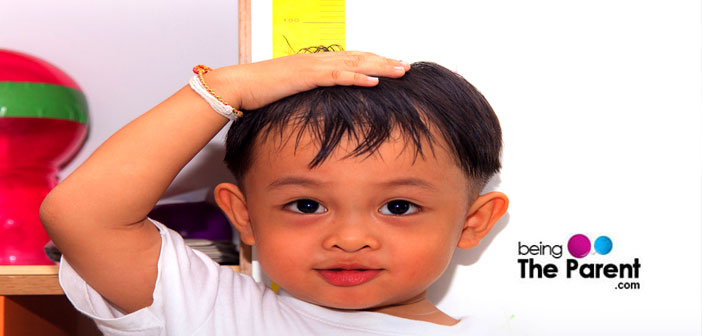
The efficiency of the endocrine system influences the health of both child and an adult. But, the inefficiency of endocrine system bought a long-term effect on children when compared to the problems that an endocrine gland can cause in an adult. One of the conditions that affect the children due to the improper working of the endocrine gland is growth hormone deficiency.
What Is Growth Hormone?
At the base of the brain, there is a pea-sized gland called pituitary gland. The anterior and the posterior part of the pituitary gland makes and stores many different hormones. One of the important hormones produced by the pituitary gland is growth hormones (GH). The growth hormone is released into the blood stream and is carried all over the body and influence with several complicated body functions. One of the most important functions associated with the influence of GH among children is growth.
When the growth hormone produced by the pituitary gland is insufficient to meet the requirement, the growth of the child will get affected badly.
What Is Growth Hormone Deficiency And What Are The Causes?
The growth hormone deficiency (GHD) occurs when the pituitary gland fails to produce enough growth hormone. As a result, the speed of growth takes place considerably at a lower pace and usually, the final height is affected.
The childhood-onset GHD is differentiated into three subdivisions:
- Congenital GHD: The congenital GHD is the deficiency of the growth hormones present from the time of the birth. The reasons behind this condition can be genetic or syndromic. Genetic reasons occur due to some problems which affect a specific gene involved in the production of growth hormone. The Syndromic cause occurs during the brain development stage of the child in the mother’s womb. Children with physical defects of the face and skull, like, cleft lip or palate is found to have reduced GH levels
- Acquired GHD: The acquired GHD is not present during the time of birth. It is acquired later as a result of infection, tumor, trauma, or radiation therapy with in the brain
- Idiopathic GHD: Idiopathic GHD has no recognized or identifiable cause
What Are The Signs And Symptoms Of Growth Hormone Deficiency Among Children?
Signs and symptoms of GHD among the children will vary with the severity and the age of the child. Mostly, the slow growth may not be noticeable until the child turns 2 or 3 years old. The intelligence of the child suffering from GHD usually will remain unaffected. Some of the signs exhibited by the child having GHD includes:
- Slow growth from infancy that continues through childhood
- Even though having normal body proportion, the child often looks smaller than the children of the same age
- Poor development of the bones in the middle of the face
- Chubbiness varying from mild to moderate depending upon the severity of GHD
- Child’s face generally looks younger than other children of the same age
- Delayed lengthening of long bones
- Delayed tooth eruption
- Poor nail growth
- Sluggish hair growth
- Delayed closure of the sutures of the skull
- In older children, delayed puberty is a significant sign of GHD. Some children may not go through the puberty at all
How Common Is Growth Hormone Deficiency In Childhood?
Growth hormone deficiency is reported in one in every 7000 babies. This condition is also may be the indications of other health conditions like Turner’s syndrome. This will increase the chances of GHD among children to one in every 3800 births. Some pertinent causes are:
- Brain surgery or severe head injury
- Radiation treatment to the brain
- Poor blood supply to the pituitary gland
- Hormonal problems related to hypothalamus gland as it involved in stimulating the pituitary gland to produce and release the hormones

How Is Growth Hormone Deficiency In Children Diagnosed?
Your pediatrician considers the chances of GHD when your child does not meet their height and weight milestones and exhibit some of the above symptoms.
- A specific blood test is done to measure the growth hormone. When the reading is lower than the normal level, then the GHD in your child can be confirmed
- X-ray of the child’s hand bone is taken. The size and shape of the bone change as the child grows. The level of the bone growth can be examined and the chances of GHD can be confirmed by taking an X-ray
- An MRI imaging scan of the head can confirm the damages that occurred to the pituitary gland due to the tumor, trauma or infection
How Is Growth Hormone Deficiency In Children Treated?
Daily shots of growth hormones are given into the fatty tissue of the child such as buttocks. This is a long-term treatment often lasting till the child reach puberty. However, during this period, the child needs to regularly visit the doctor and monitor the hormone levels in the blood. The change in the dosage of medicine if needed depends on this blood test on regular basis.
Generally, injections are given in the evening to synchronize with the body’s natural cycle of GH production.
Is Growth Hormone Therapy Safe?
Growth hormone therapy is relatively safe when weighed against its efficiency. Although serious side effects are rare, some minor side effects are commonly seen due to the prolonged period of injecting the growth hormone such as:
- Swelling and redness around the area were the injections is taken
- Joint and muscle ache
- Numbness around the injected area
- Headache
- Fluid Retention
The sooner the condition is treated, the chances of that a child to grow to a near-normal adult height increases. So never hesitate to start the treatment once your child is diagnosed with GHD.

